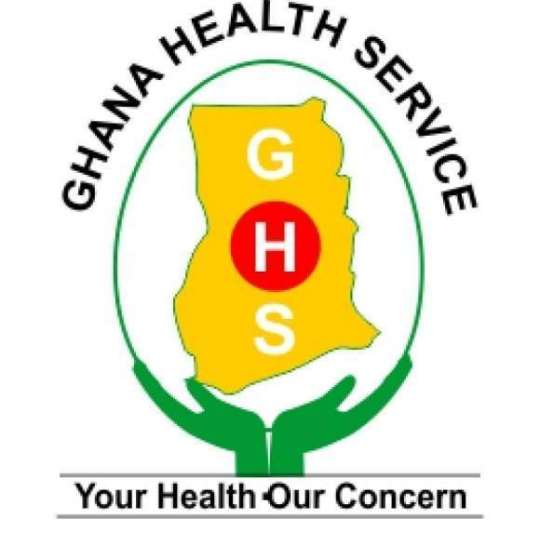Ghana’s Mpox outbreak has reached 657 confirmed cases following 36 new infections, according to the Ghana Health Service’s latest situational report, as health authorities launch a vaccination campaign targeting the disease’s epicenter in the Western Region.
The figures, current as of September 28, include three deaths and one person currently receiving hospital treatment, marking a steady climb in infections since the outbreak resurged in May 2025 after an earlier decline.
The Ghana Health Service has responded by launching a 21 day vaccination exercise that began on October 4, 2025, with 20,000 vaccine doses deployed to the Western Regional Directorate to break transmission chains in the area recording the highest case concentration.
Dr Franklin Asiedu-Bekoe, Director of Public Health at the Ghana Health Service, received his first dose alongside other health officials to signal the campaign’s start, using visible leadership participation to encourage public confidence in the vaccination program.
The Western Region deployment represents a significant portion of the 33,600 vaccines Ghana acquired in August 2025 to combat the outbreak. Health Minister Kwabena Mintah Akandoh had described the procurement as part of proactive measures to safeguard public health, though the relatively modest vaccine supply compared to case numbers suggests targeted rather than mass vaccination strategy.
Ghana’s current outbreak trajectory stands in contrast to global trends. While the country experienced an 87 percent increase in confirmed cases during one week in August, jumping from 167 to 313 cases, overall Mpox infections have declined in other world regions including the Americas and Europe, which both reported 31 percent reductions.
The disease’s persistence in Ghana raises questions about transmission patterns and whether public health messaging has effectively reached populations most at risk. Mpox spreads primarily through close contact with infected individuals or contaminated materials, making behavior change communication critical to controlling outbreaks.
Health officials have not publicly detailed which population groups are being prioritized for vaccination, though international guidance typically recommends targeting healthcare workers, close contacts of confirmed cases, and individuals at higher risk of exposure based on behavioral or occupational factors.
The three confirmed deaths represent a case fatality rate below 0.5 percent based on current figures, significantly lower than rates seen in some other African countries during recent outbreaks. However, any preventable deaths underscore the importance of early diagnosis and appropriate clinical management for severe cases.
Ghana’s outbreak forms part of a broader continental pattern. As of July 2024, ten African nations including Burundi, Cameroon, Central African Republic, Congo, Democratic Republic of Congo, Ghana, Liberia, Nigeria, Rwanda, and South Africa had recorded 14,250 cases and 456 deaths, though those figures predate the current surge.
The disease formerly known as monkeypox typically causes fever, rash, and swollen lymph nodes, with most patients recovering within two to four weeks. However, severe cases can occur, particularly in individuals with compromised immune systems, pregnant women, and young children.
Public health experts say controlling Mpox requires sustained effort beyond vaccination campaigns. Contact tracing to identify and monitor individuals exposed to confirmed cases, isolation of infected persons to prevent further transmission, and public education about symptoms and transmission routes all play crucial roles in outbreak response.
The timing of Ghana’s vaccination campaign, beginning in October as case numbers continue climbing, suggests authorities are attempting to contain the outbreak before it spreads more widely beyond current hotspots. Whether 33,600 vaccine doses prove sufficient depends on factors including the actual number of high risk individuals, vaccine acceptance rates, and the outbreak’s geographical concentration.
International health organizations including the World Health Organization and Africa Centres for Disease Control and Prevention have supported African countries with technical guidance and, in some cases, vaccine access through donation programs. Ghana and Guinea both applied for vaccines to Africa CDC, indicating the country sought external support beyond its own procurement efforts.
Ghana’s experience managing this outbreak will likely inform future responses to emerging infectious diseases, particularly regarding the balance between vaccine supply constraints and targeted deployment strategies. The 21 day vaccination window suggests authorities are operating under tight timelines to achieve maximum impact before potentially needing to expand the campaign geographically.
Health authorities have not announced whether additional vaccine shipments are planned, leaving uncertainty about capacity to respond if cases continue climbing beyond the Western Region or if the initial 33,600 doses prove inadequate for controlling transmission.
The outbreak’s trajectory over the next several weeks will reveal whether Ghana’s vaccination strategy, combined with other public health measures, can reverse the rising case trend or whether more aggressive intervention becomes necessary to protect the broader population.
Source: newsghana.com.gh











